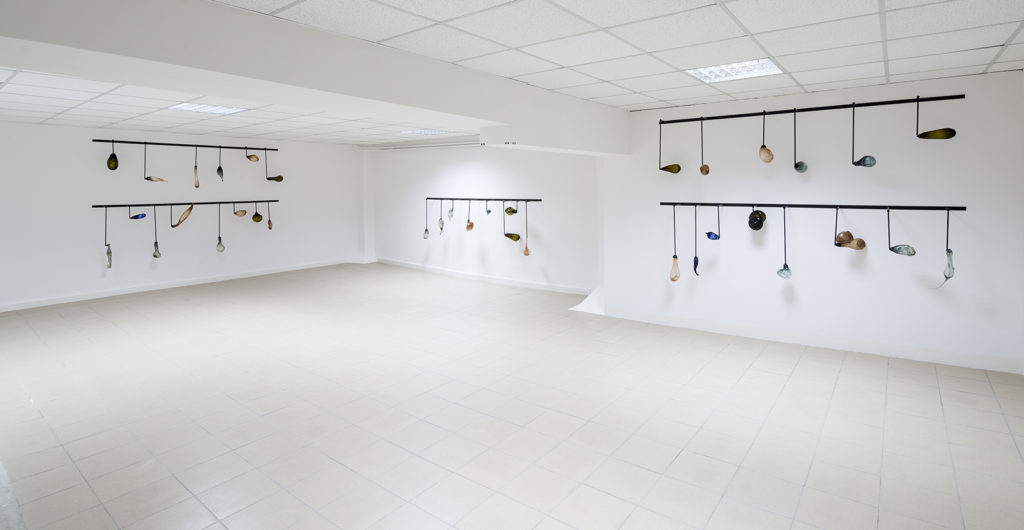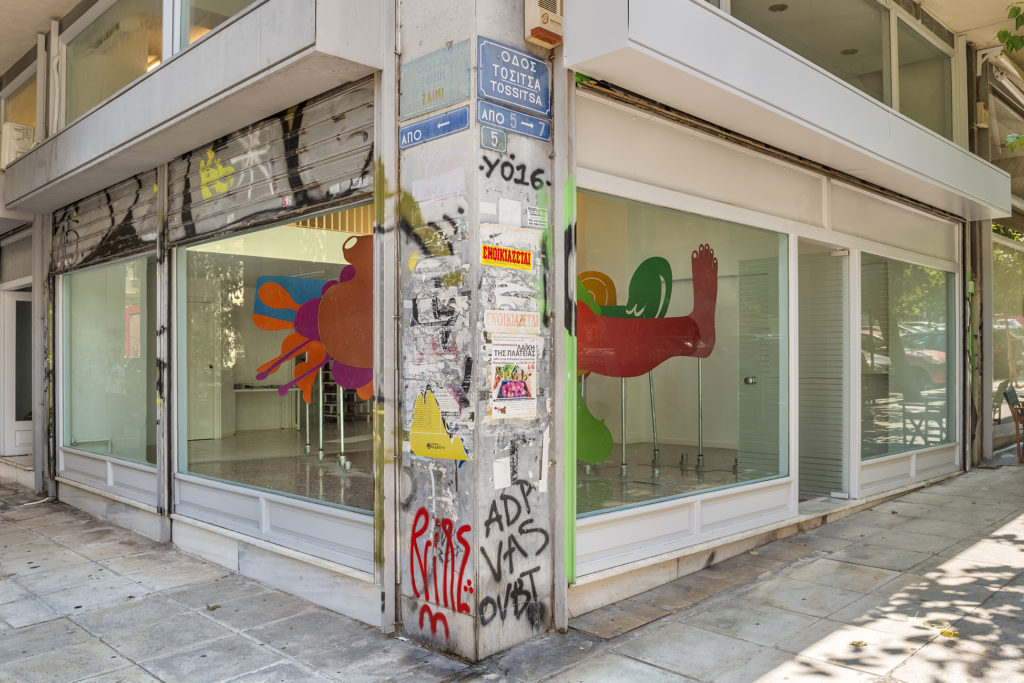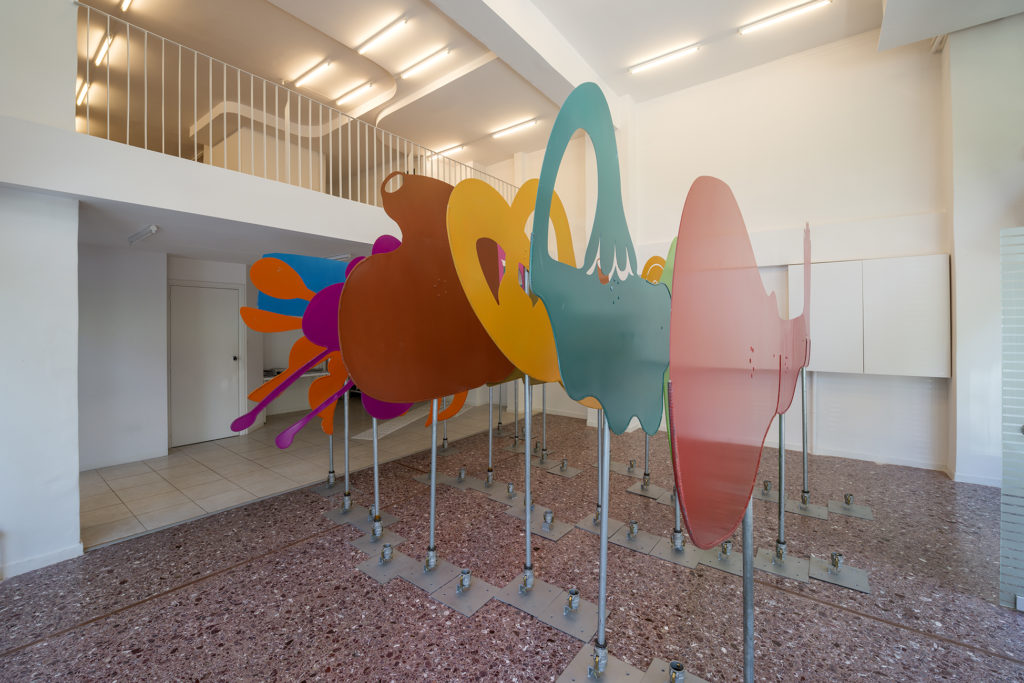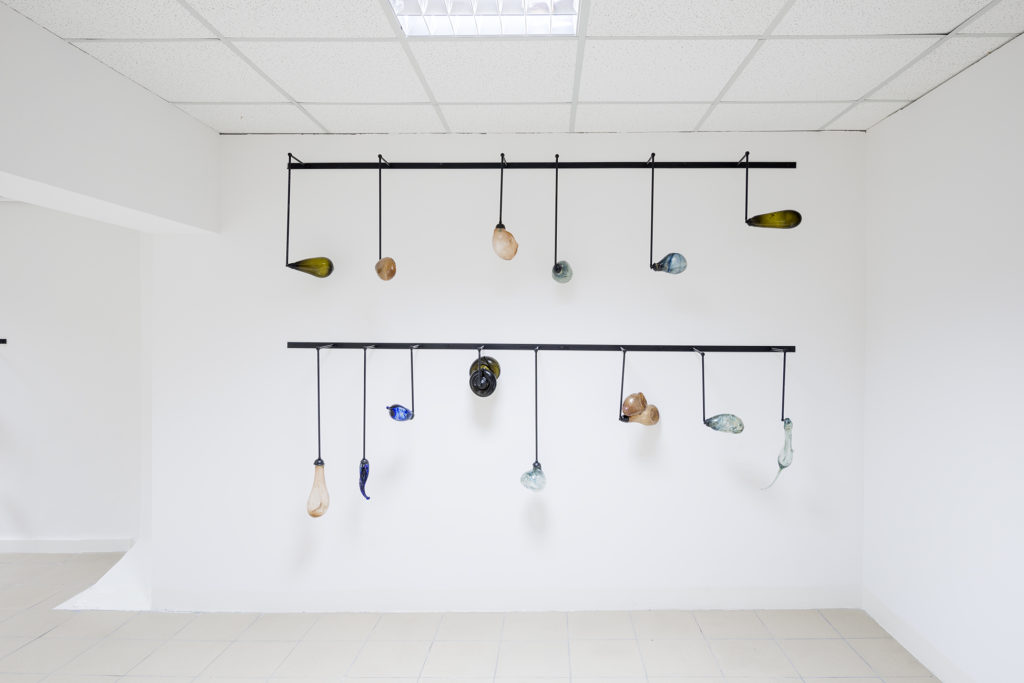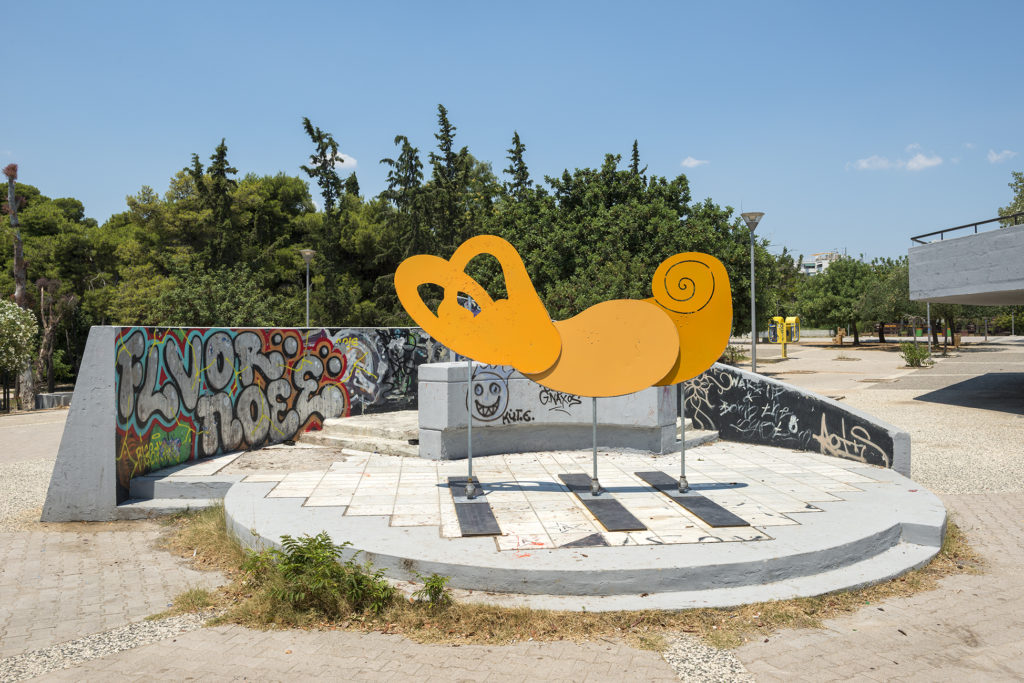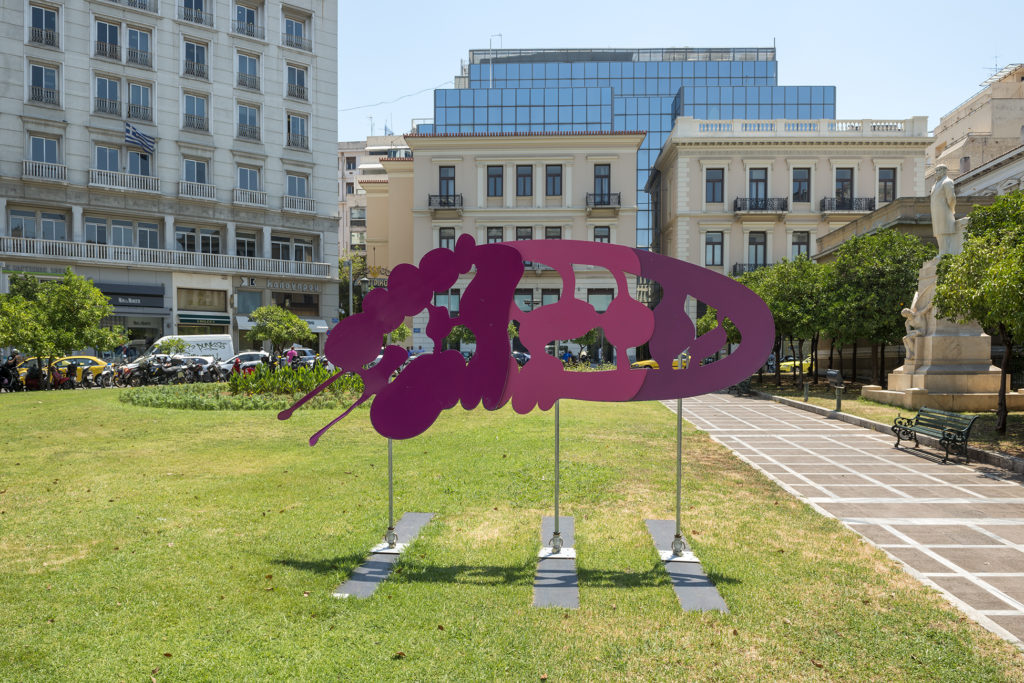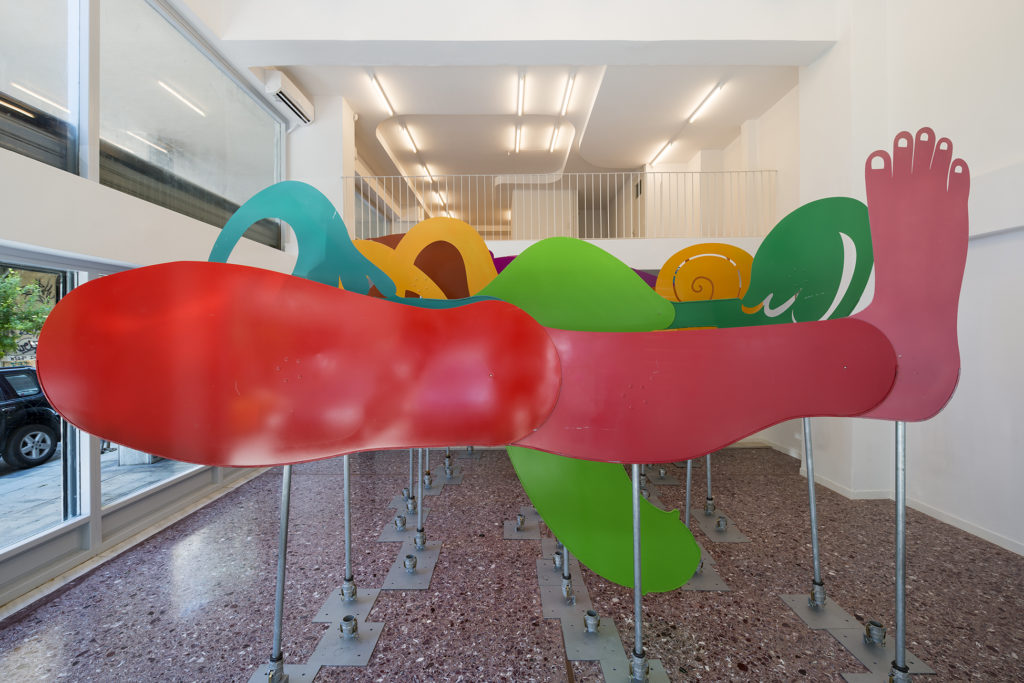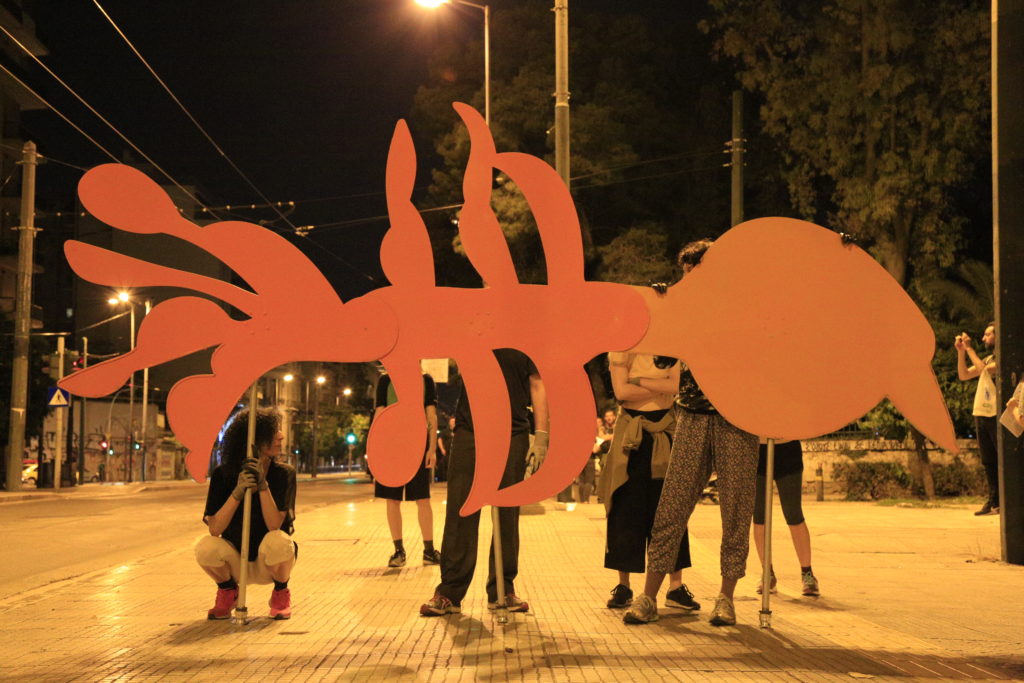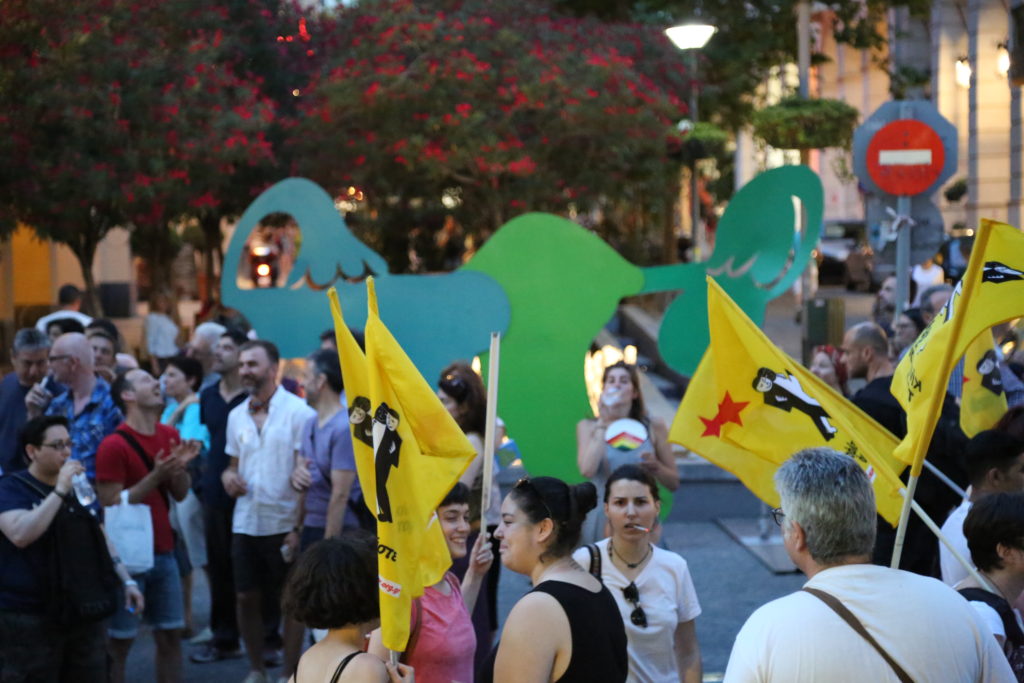Georgia Sagri
Documenta 14
April 6, 2017–July 16, 2017Athens
With majestic buildings as arteries and tree-lined boulevards, Omonoia Square begins life on paper as the heart of Bavarian rule. What happened to the foundation stone laid there in honor of King Otto? Imagine it in the square’s underworld, decomposed into bits of matter that have since been reincarnated into its throbbing pulse. Now and again, Omonoia Square vibrates to the beat of demonstrations that spill onto the street to shake the country, its ground shaped by the democratic impulse of bodies congregating. Omonoia, the curious amalgam of unfortunate urban planning, neoliberal policies, and precarious modes of living, enters the realm of the symbolic to the rhythm of walking feet.
Or so it seems when standing on the balcony of Ύλη[matter]HYLE, a semiprivate space off Omonoia Square. Hyle means “matter” in English and makes you contemplate things and their essence. This corresponds to the space’s aspiration to reconsider “the vocabularies of another society.” Ύλη[matter]HYLE was founded by Georgia Sagri. Born in Athens in 1979, the visual artist’s practice across different media focuses on identity construction, social habits, and contemporary power structures, often subverting behavioral patterns and reconsidering belief systems through performance. Exploring the limits of physical endurance is integral to her work as is the investigation into the bodily manifestation of politics—occupying public space (Polytechnic, 1999), embodying the street (The New Kind, 2003), and exercising the right to unrestricted movement (Mona Lisa Effect, 2014). In her recent work Attempt. Come. (2016), the invitation was to engage our bodies in rethinking society. At the former headquarters of the Greek junta’s military police, we abandoned temporal conventions and the comfort of a stable viewpoint to follow the artist dancing to the sound of drums for twenty hours. The performance was a poetic exercise in coupling political, social praxis with ancient rites. Sagri waving a piece of cloth as symbol of resistance; Sagri spiraling out of control like a contemporary bacchante. How many dancing steps to reconcile with the specters of the past? How many to join her? As the performance unfolded, and as her new piece Dynamis for documenta 14 will likewise, body and place appeared to mutually shape each other. To the beating of the drum, movement transformed into action, and the site danced into a space of freedom where we, the audience, viewers, citizens, were called to imagine that which has yet to come.
—Elena Parpa
